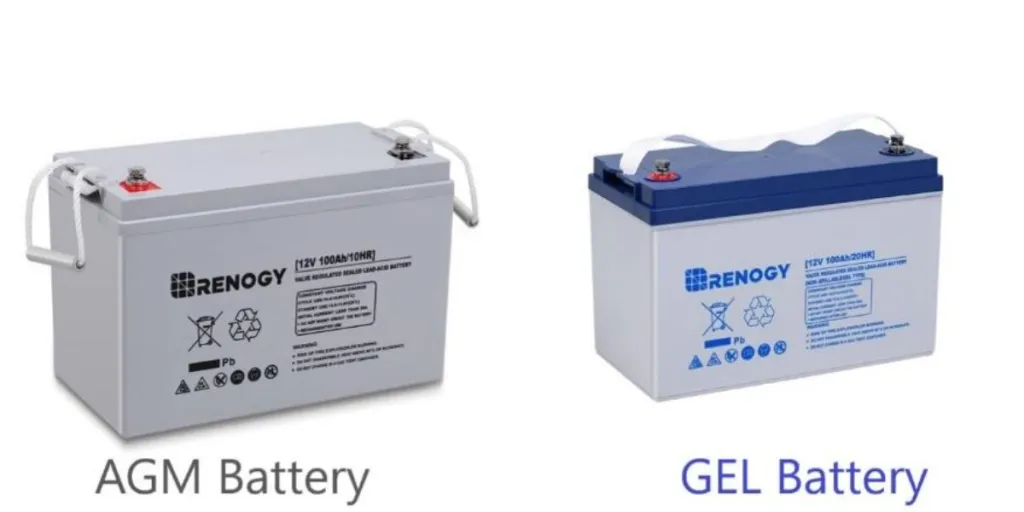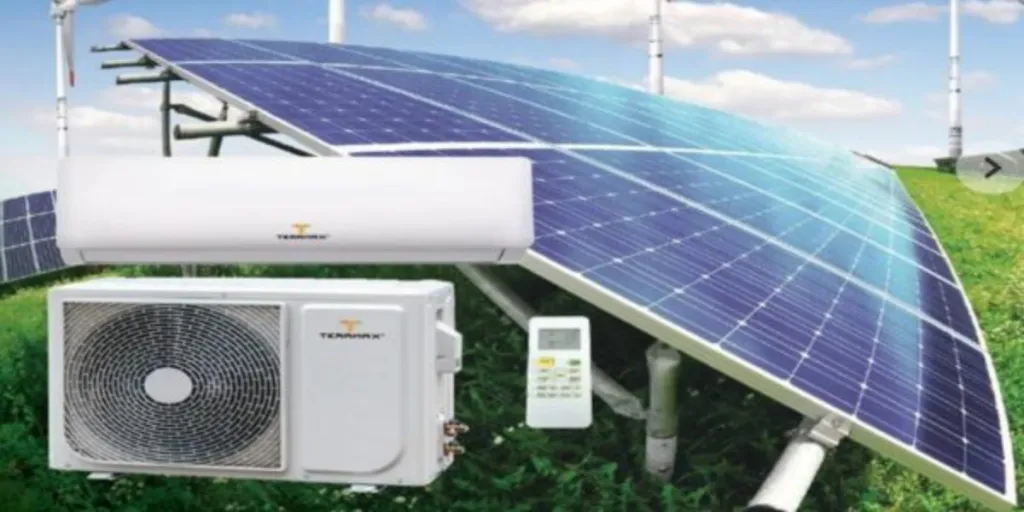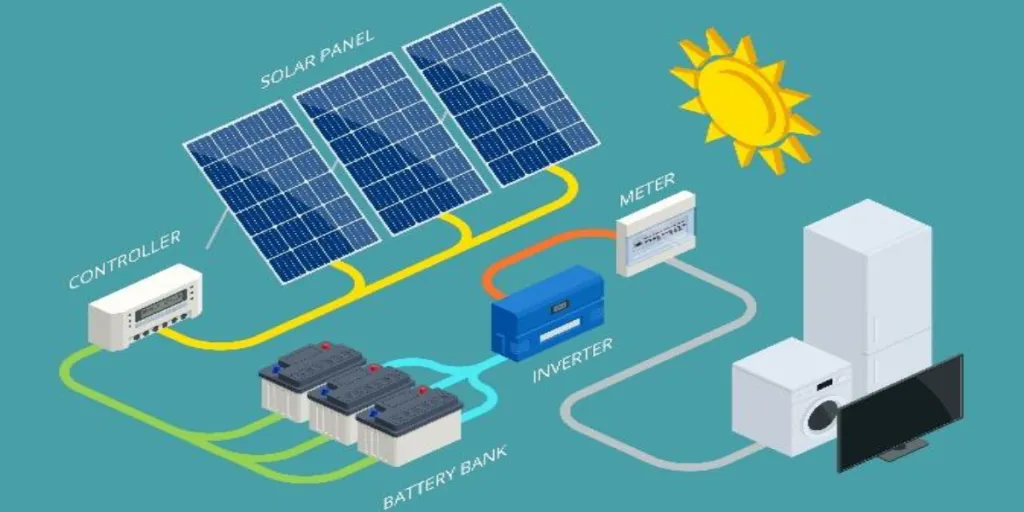As the two types of trolley batteries you may require in your life, AGM batteries and gel batteries, while both being modern variants of lead-acid batteries, differ in design and application.
This article will introduce you to the concepts of these two types of batteries and the relevant factors you need to consider when picking between them.
Table of Contents
What are AGM and gel batteries?
Market size and growth
Further info for AGM and gel batteries
Conclusion
What are AGM and gel batteries?
The AGM (Absorbed Glass Mat) battery is an advanced lead-acid battery that uses a special adsorbed glass fiber spacer technology. In AGM batteries, the electrolyte is adsorbed by the glass fiber spacer, which eliminates the presence of free liquid and enhances the safety and durability of the battery. The basic components of AGM batteries include a lead dioxide positive plate, a spongy pure lead negative plate, and a sulfuric acid electrolyte.
These batteries are mainly categorized into starter and deep-cycle types, with the former commonly used for starting automobiles and other engines and the latter for scenarios that require prolonged discharging, such as electric vehicles and solar energy storage systems. AGM batteries are typically more expensive than traditional liquid lead-acid batteries, but due to their higher performance and safety, they are very popular in many highly-demanding application scenarios.
Gel batteries are another variant of lead-acid batteries in which the electrolyte is in the form of a gel. This is achieved by adding substances such as silica gel to the sulfuric acid electrolyte. The positive and negative plates of gel batteries are similar to those of conventional lead-acid batteries, but due to the gel-like electrolyte, they are superior in certain aspects, especially in deep discharge and temperature extremes.
These batteries are primarily used in applications that require stable and long-term discharge, such as electric wheelchairs, golf carts, and solar energy systems. Gel batteries typically cost more than AGM batteries, but they offer longer life and better performance stability.
In summary, both AGM and gel batteries offer improved performance and reliability over traditional lead-acid batteries, even though they cost more. AGM batteries are known for their durability and versatility and are suitable for a wide range of applications, from automotive starting to solar energy storage.
Gel batteries, on the other hand, are favored for their excellent deep-discharge capability and stability in extreme temperatures and are particularly suited for applications that require a long-term, stable energy supply. Depending on specific application needs and budgets, consumers can choose between these two advanced lead-acid battery technologies.
Market size and growth
The current market outlook for AGM batteries is positive. According to ResearchAndMarkets.com, the global AGM battery market is expected to exhibit a compound annual growth rate (CAGR) of 8.1% over the forecast period, with the market size projected to grow from US $11 billion in 2022 to US $20.4 billion by 2030.
This growth is primarily driven by investments in R&D by top manufacturers and the demand for maintenance-free, leak-free, and long-lasting batteries. This market is expected to expand further, particularly driven by the demand for renewable energy projects. In addition, AGM batteries have significant application prospects in the uninterruptible power supply (UPS) sector.
On the other hand, the outlook for the gel battery market also shows a positive growth trend. The global gel battery market reached a market size of US $3.4 billion in 2022. This market is expected to grow to US $7.3 billion by 2028, exhibiting a CAGR of approximately 13.6% between 2022 and 2028.
Further info for AGM and gel batteries
AGM batteries
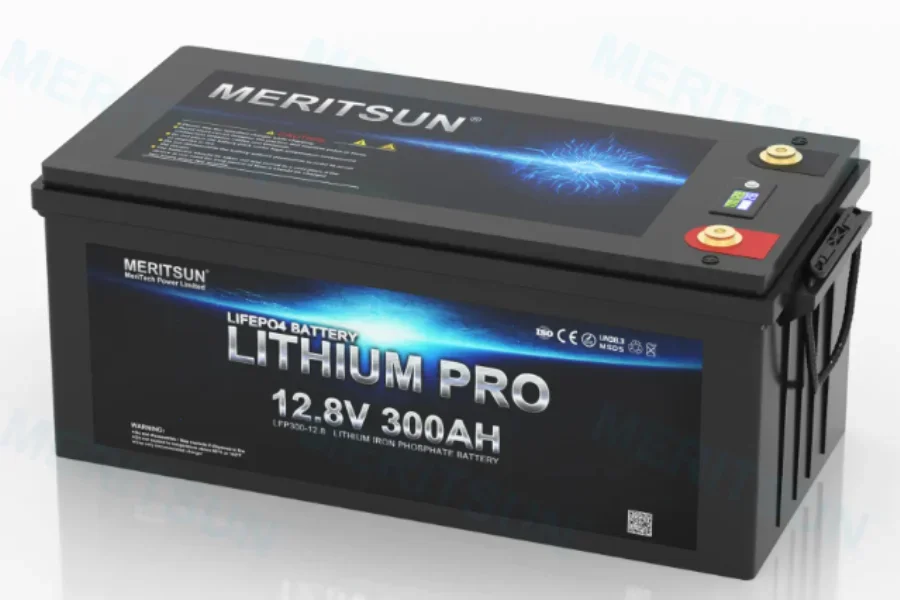
AGM batteries are a special type of lead-acid battery that improves on the design of conventional lead-acid batteries by adsorbing the electrolyte through a glass fiber spacer. This configuration allows AGM batteries to operate without leakage, improving safety and reliability. AGM batteries are typically more durable and better able to withstand bumps and tilts than traditional lead-acid batteries. And they typically have a sealed design, reducing the risk of leakage.
The following are the advantages and disadvantages of AGM batteries:
| Advantages of AGM batteries | Disadvantages of AGM batteries |
| High vibration resistance: Suited for mobile applications and rough environments due to their structure. | Higher cost: Generally more expensive than traditional lead-acid batteries. |
| Low self-discharge rate: Extend storage time compared to traditional lead-acid batteries. | Sensitive to overcharging: Can be damaged if not charged correctly. |
| Faster charging capability: Charge more quickly than traditional lead-acid batteries. | Shorter lifespan in deep-cycle applications: May not last as long as some other types of batteries in these scenarios. |
| Broad temperature range adaptability: Effective in a wide range of temperatures. | |
| Environmentally friendly: Minimal impact due to their sealed design. |
Application scenarios for AGM batteries:
- Automotive industry: Used as car starting batteries, especially in modern cars equipped with start-stop technology.
- Renewable energy storage: Used to store energy in solar and wind energy systems.
- Uninterruptible power supply (UPS): To provide backup power in critical facilities such as data centers, hospitals, and communication base stations.
- Portable applications: Used in recreational vehicles such as campers and yachts.
- Security and emergency lighting: Provides power during power outages or emergencies.
Gel batteries
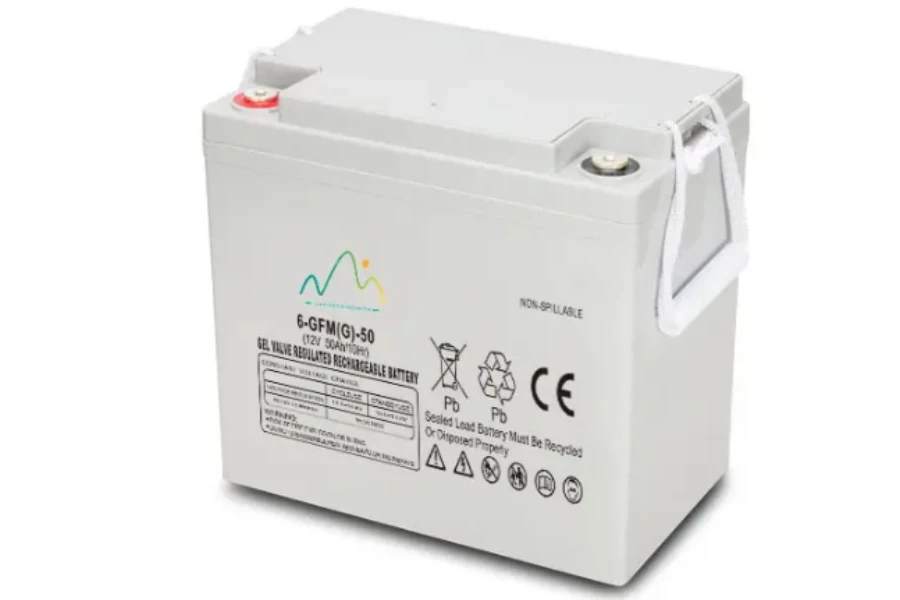
Gel batteries are also a special type of lead-acid battery that improves on the design of traditional lead-acid batteries by adding a solidifying agent such as silica gel to the electrolyte. This construction allows gel batteries to operate without leakage, improving safety and reliability. Gel batteries typically have a longer lifespan and better deep-discharge performance than other types of lead-acid batteries.
The following are the advantages and disadvantages of gel batteries:
| Advantages of gel batteries | Disadvantages of gel batteries |
| Deep discharge performance: Excel in deep discharge applications, suitable for scenarios requiring frequent charge and discharge. | Higher cost: Generally more expensive than other types of lead-acid batteries. |
| Low self-discharge rate: Lower compared to other types of lead-acid batteries. | Charging sensitivity: Sensitive to the method of charging, improper charging can damage the batteries. |
| Wide temperature range: Capable of operating over a broader temperature range, suitable for extreme environments. | Weight: Gel batteries may be heavier compared to some other types of batteries. |
| Vibration resistance and safety: More resistant to vibration and have a lower risk of leakage due to the gel electrolyte. |
Application scenarios for gel batteries:
- Electric wheelchairs and medical devices: Gel batteries are commonly used in these applications because they require reliable deep discharge performance.
- Solar and wind energy storage systems: Gel batteries are used to store energy in renewable energy systems.
- Marine applications: They can be used in ships and yachts as they are favored for their vibration resistance and safety.
- Leisure vehicles: They can be used in campervans and caravans as they can provide a stable power supply.
Conclusion
Here are a few key factors to take into consideration when you need to make a choice between AGM batteries and gel batteries:
Application suitability: AGM batteries: Ideal for applications requiring high bursts of power, such as automotive starting batteries and power-hungry devices. Suitable for uninterruptible power supply (UPS) systems due to their quick charge capabilities.
Gel batteries: Best suited for deep-cycle applications, like electric wheelchairs and solar and wind energy storage systems, where consistent, long-term power is needed. They perform better in extreme temperatures and rough conditions.
Maintenance and durability: AGM batteries are generally more durable and better at resisting vibration and shock. They are also maintenance-free. Gel batteries require more careful charging to prevent damage and are more sensitive to improper charging practices.
Cost considerations: AGM batteries are usually less expensive than gel batteries. Gel batteries, while more expensive, may offer better long-term value for specific applications that require deep cycling.
Performance: AGM batteries provide higher current output and are capable of quicker recharge. Gel batteries excel in deep discharge resilience and long-term performance.
Environmental conditions: AGM batteries are a good fit for temperate climates and physically demanding applications. Gel batteries are the better choice for extremely hot or cold environments or in situations where the battery will be idle for long periods of time.
Lifespan: AGM batteries typically have a shorter lifespan in deep-cycle applications compared to gel batteries. Gel batteries often have a longer lifespan, especially in applications involving deep discharges.
Charging requirements: Ensure your charging system is compatible with the type of battery you choose. AGM batteries can handle higher charge rates than gel batteries. Gel batteries require a specific type of charger or a charge setting that limits voltage to prevent overcharging.
If you are interested in purchasing AGM batteries or gel batteries, visit Alibaba.com.
